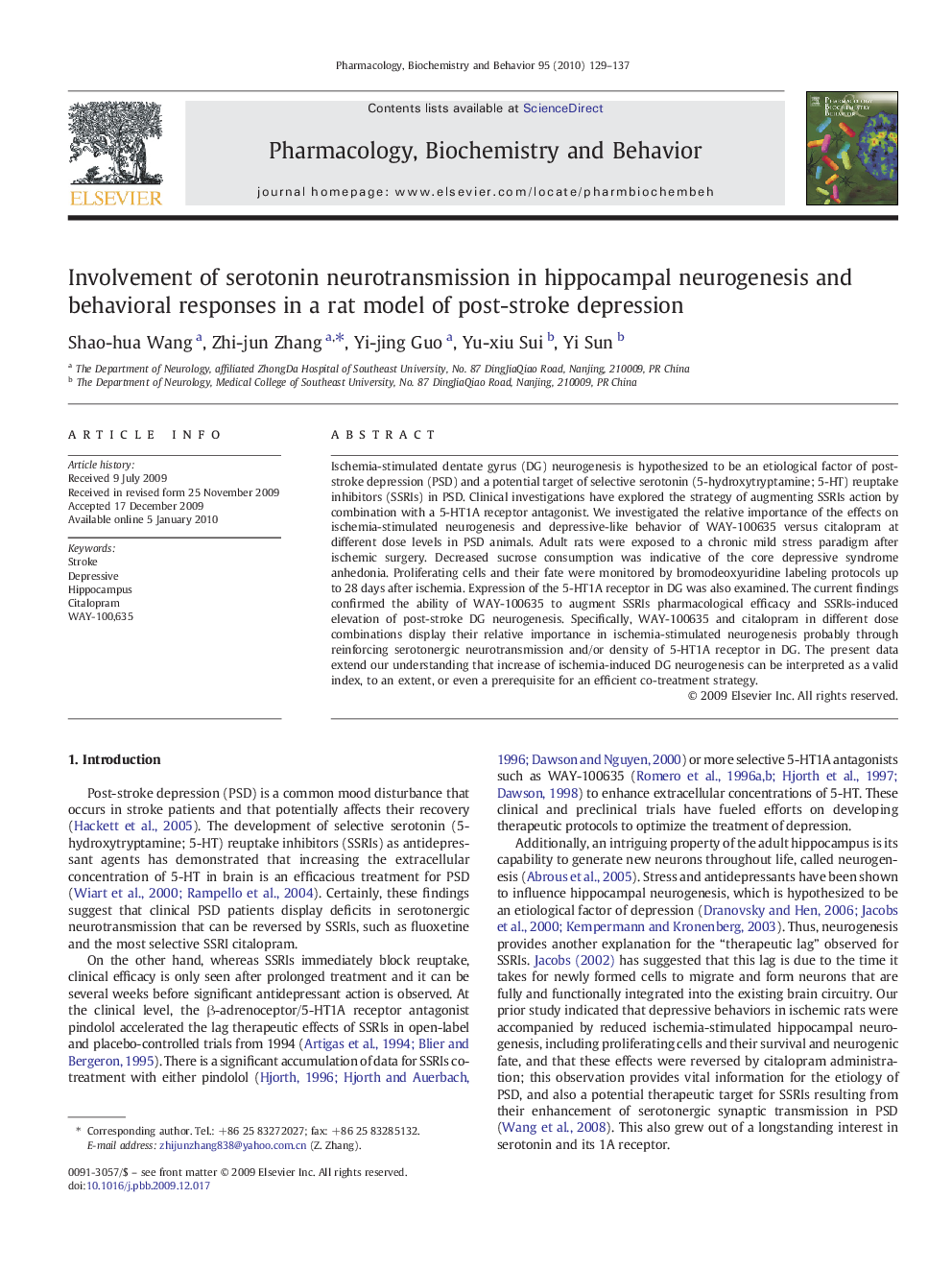| Article ID | Journal | Published Year | Pages | File Type |
|---|---|---|---|---|
| 2013481 | Pharmacology Biochemistry and Behavior | 2010 | 9 Pages |
Abstract
Ischemia-stimulated dentate gyrus (DG) neurogenesis is hypothesized to be an etiological factor of post-stroke depression (PSD) and a potential target of selective serotonin (5-hydroxytryptamine; 5-HT) reuptake inhibitors (SSRIs) in PSD. Clinical investigations have explored the strategy of augmenting SSRIs action by combination with a 5-HT1A receptor antagonist. We investigated the relative importance of the effects on ischemia-stimulated neurogenesis and depressive-like behavior of WAY-100635 versus citalopram at different dose levels in PSD animals. Adult rats were exposed to a chronic mild stress paradigm after ischemic surgery. Decreased sucrose consumption was indicative of the core depressive syndrome anhedonia. Proliferating cells and their fate were monitored by bromodeoxyuridine labeling protocols up to 28Â days after ischemia. Expression of the 5-HT1A receptor in DG was also examined. The current findings confirmed the ability of WAY-100635 to augment SSRIs pharmacological efficacy and SSRIs-induced elevation of post-stroke DG neurogenesis. Specifically, WAY-100635 and citalopram in different dose combinations display their relative importance in ischemia-stimulated neurogenesis probably through reinforcing serotonergic neurotransmission and/or density of 5-HT1A receptor in DG. The present data extend our understanding that increase of ischemia-induced DG neurogenesis can be interpreted as a valid index, to an extent, or even a prerequisite for an efficient co-treatment strategy.
Related Topics
Life Sciences
Biochemistry, Genetics and Molecular Biology
Biochemistry
Authors
Shao-hua Wang, Zhi-jun Zhang, Yi-jing Guo, Yu-xiu Sui, Yi Sun,
